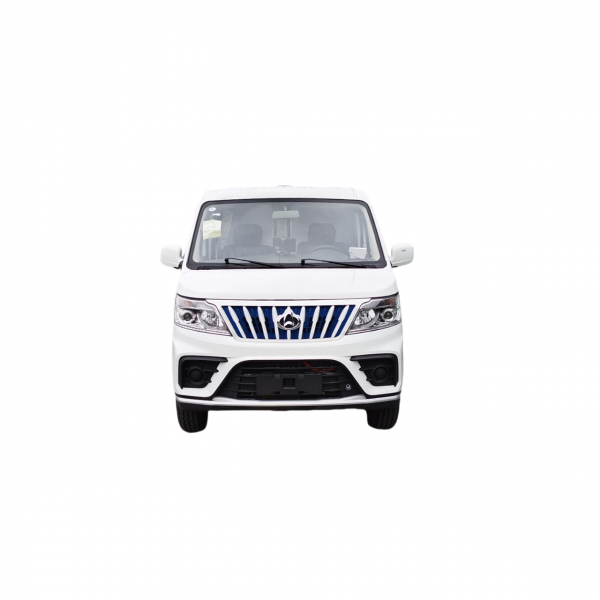Introduction
Work trucks are essential vehicles for various industries, including construction, agriculture, landscaping, and transportation. These vehicles are used for transporting materials, equipment, and personnel to job sites, often in challenging conditions and environments. One crucial aspect of work trucks is their lighting system, which plays a significant role in ensuring safety, productivity, and efficiency. In this comprehensive guide, we will explore the importance of work truck lighting, the different types of lighting available, and key considerations for selecting the right lighting system for your work truck.
Importance of Work Truck Lighting

Work truck lighting serves multiple purposes that are crucial for the operation and safety of the vehicle and its occupants. Here are some key reasons why work truck lighting is essential:
1. Safety: Proper lighting is essential for ensuring the safety of the driver, passengers, and other road users. Adequate illumination allows the driver to see clearly and be seen by others, reducing the risk of accidents, especially in low-light conditions or inclement weather.
2. Visibility: Work trucks often operate in dimly lit areas, such as construction sites, warehouses, and remote locations. Effective lighting helps improve visibility, making it easier to navigate through these environments and locate specific items or objects.
3. Productivity: Good lighting is essential for maintaining productivity on the job site. Whether loading and unloading materials, performing repairs or inspections, or working on a project at night, proper illumination ensures that tasks can be carried out efficiently and accurately.
4. Compliance: Work trucks are subject to various regulations regarding lighting requirements, including brightness, color, and placement of lights. Ensuring that your vehicle meets these standards is essential for legal compliance and avoiding penalties.
Types of Work Truck Lighting
Work truck lighting encompasses a wide range of fixtures and systems designed to provide illumination for different purposes. Here are some common types of work truck lighting:
1. Headlights: Headlights are the primary lighting source for work trucks and are essential for visibility on the road. They illuminate the path ahead and make the vehicle visible to other drivers.
2. Taillights: Taillights serve as indicators of the truck's presence and direction of travel to vehicles behind it. They help prevent rear-end collisions and ensure safe braking.
3. Brake Lights: Brake lights illuminate when the driver applies the brakes, signaling to other drivers that the vehicle is slowing down or stopping.
4. Turn Signals: Turn signals indicate the driver's intention to change lanes or make a turn, improving communication with other road users.
5. Emergency Lights: Emergency lights, such as strobe lights or light bars, are used to signal emergencies, warn other drivers of hazards, and alert pedestrians to the presence of the vehicle.
6. Work Lights: Work lights are designed to provide illumination for tasks performed outside the vehicle, such as loading and unloading cargo, conducting repairs, or working at night.
7. Auxiliary Lights: Auxiliary lights, such as floodlights or spotlights, can be added to work trucks to enhance visibility in specific areas or illuminate a larger area around the vehicle.
Considerations for Selecting Work Truck Lighting
When choosing lighting for your work truck, several factors should be taken into account to ensure that the system meets your needs and requirements. Here are some key considerations to keep in mind:
1. Regulations and Standards: Check local regulations and standards regarding work truck lighting to ensure that your vehicle complies with legal requirements. This includes specifications for brightness, color, placement, and visibility of lights.
2. Visibility Requirements: Consider the specific lighting needs of your work truck based on the tasks it performs and the environments it operates in. Determine the required brightness, coverage, and beam angle for optimal visibility.
3. Durability and Reliability: Work trucks are subjected to harsh conditions, including vibrations, extreme temperatures, and exposure to dust, moisture, and chemicals. Choose lighting fixtures that are durable, weatherproof, and built to withstand the rigors of daily use.
4. Energy Efficiency: Opt for energy-efficient lighting solutions that minimize power consumption and reduce strain on the vehicle's electrical system. LED lights are a popular choice for work trucks due to their low power consumption and long lifespan.
5. Installation and Mounting Options: Consider the ease of installation and mounting of the lighting fixtures on your work truck. Choose lights that are compatible with your vehicle's design and can be securely mounted in the desired locations.
6. Versatility and Adjustability: Select lighting systems that offer versatility and adjustability to meet different lighting needs. For example, choose lights with adjustable beam angles or brightness levels for flexibility in various working conditions.
7. Integration with Other Systems: Ensure that the selected lighting system can be integrated with other vehicle systems, such as the electrical system, controls, and monitoring devices. Compatibility with existing equipment will simplify installation and operation.
Conclusion
Work truck lighting is a critical component that affects safety, visibility, productivity, and compliance with regulations. By understanding Dump truck payload of work truck lighting, familiarizing yourself with the different types of lighting available, and considering key factors when selecting lighting for your work truck, you can ensure that your vehicle is equipped with a reliable and effective lighting system. Illuminate your path to success with the right work truck lighting solutions tailored to your specific needs and requirements.
